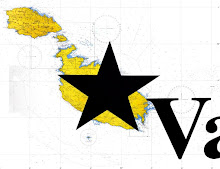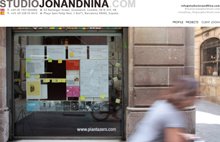Some of the Things I Really Must Do
Before I Die*
From Species of Spaces and Other Pieces by Georges Perec
First of all there are things very easily done, things I could do as from today, for example
1 Take a trip on a bateau-mouche
Then things a tiny bit more significant, things that involve decisions, things which I tell myself that, were I to do them, would perhaps make my life easier, for example
2 Make up my mind to throw out a certain number of things that I keep without knowing why I keep them
or else
3 Arrange my bookshelves once and for all
4 Acquire various household appliances
or again
5 Stop myself smoking (before being forced to)
Then things linked to a more profound desire for change, for example
6 Dress in a completely different way
7 Live in a hotel (in Paris)
8 Live in the country
9 Go and live for quite a long time in a foreign city (London)
Then things that are linked to dreams of time or space. There are quite a few:
10Pass through where the Equator crosses the International Date-Line
11 Go beyond the Arctic Circle
12 To have an ‘out-of-time’ experience (like Siffre)
13 Take a trip in a submarine
14 Take a long trip on a boat
15 Make an ascent or a journey in a balloon or airship
16 Go to the Kerguelen Islands (or to Tristan da Cunha)
17 Ride a camel from Morocco to Timbuktu in 52 days
Then among all the things I don’t yet know, there are certain ones I’d like to have the time to discover properly
18 I’d like to go into the Ardenned
19 I’d like to go to Bayreuth, but also to Prague and to Vienna
20 I’d like to go to the Prado
21 I’d like to drink some rum found at the bottom of the sea (like Captain Haddock in The Treasure of Red Rackham)
22 I’d like to have time to read Henry James (among others)
23 I’d like to travel along canals
Next there are lots of things that I’d like to learn, but I know I won’t because it would take me too long, or because I know I would succeed only very imperfectly, for example
24 Find the solution to the Rubik cube
25 Learn to play the drums
26 Learn Italian
27 Learn the trade of printer
28 Paint
Then things connected with my work as a writer. There are a lot of them. For the most part these are vague projects; some are perfectly possible and depend on me, for example
29 Write for very young children
30 Write a science-fiction novel
others depend on things I might be asked to do
31 Write the script for an adventure film in which, for example, you would see 5,000 Kirghiz tribesmen riding across the steppes
32 Write a real serial novel
33 Work with a strip cartoonist
34 Write songs (for Anna Prucnal for example)
There’s one more thing I’d like to do, but I don’t know where it belongs, it’s to
35 Plant a tree, and watch it get bigger
Finally, there are things it’s impossible to envisage from now on but which would have been possible not so long ago, for example
36 Get drunk with Malcolm Lowry
37 Make the aquaintance of Vladimir Nabokov
etc., etc.
There are lots of other for sure.
I gladly stop at 37.
*The written version of a radio broadcast made by Perec on France-Culture in 1981.
09 August 2010
10 June 2010
Architecture and Cinema
Illuminating space
Never have architecture and film been so magically paired as in Cinema Paradiso a film set in a small Sicilian town, that celebrates the magic of cinema. When half the town is refused entrance into the cinema, they gather in the square outside, shouting and pounding on the doors. Alfredo, the projectionist gently turns a piece of glass and in doing so steals a tiny portion of the projected light that is meant for inside the cinema. As he moves the glass, our gaze turns to follow the film as it dances across the small projection room. It stretches fluidly across cornices and bends around corners. As it lands on a smooth wall, it falls into focus and two characters appear out of its misty brightness. They move inside the frame of light and with it they slide over the edges of the room. They linger momentarily on the edge of an open window. They glide on, disappearing, before settling on the façade of a building outside. The mob quieten, transfixed by the magic of the moving image. The small square fills up. People sit uncomfortably close to each other, perching on every doorstep and stone they can find. All heads are tilted upwards, all eyes gaze in the same direction. The familiar square is transformed into a sea of heads.
The projection of a film onto a building has the power to transform the everyday into the magical. It captivates audiences and to silences mobs. Every cornice is accentuated, every crack a prop in the movie. The façade glows a flashing rhythmic light onto its watchers. It transcends its brick and mortar existence and becomes a window to myriad worlds. This scene in ‘Cinema Paradiso’ reveals various ways in which cinema and architecture inform and accentuate each other.
The scene is choreographed to perfection. Whilst the image glides along the edges of the room, the camera moves perfectly in time, with Ennio Morricone’s soundtrack accompanying the two and culminating at the moment where the film is revealed in the square outside. Here film is used to illuminate the magic of film. It is able to capture sequences through time and space and imposes a point of view. Our eyes follow the movement of the projection because the camera does. The director can be selective about what to put in the frame, how to reveal it, what to focus on and when to move. To the envy of the architect, the filmmaker has control over the audience’s eyes. An experience is crafted in a way that architecture can only dream of. Architects are able to enclose space, play with light, create shadows and manipulate the sound and feeling of a place. However they can only speculate on the ways in which it will be experienced. Film can craft an experience.
In ‘Cinema Paradiso’ architecture forms part of this crafted experience. It is defined by the movement of light and captured by the moving camera. The light stretches, curves, shrinks, grows, focuses and blurs as it traces out the space. We experience space in a new way. The light traces out the space as hands would, by touching it. The shadows created by the projected beam allow us to feel the textures that it skims over. Light jumps from one surface to the next regardless of the distance between them. The traversed space is expressed by the projection’s change in size. The moving film explores the built world. It illuminates its edges.
Labels:
architecture,
Cinema Paradiso,
film,
nostalgia,
outdoor cinema
On Species of Spaces and other Pieces by Georges Perec
To write a review on a book I admire is a difficult task. My first dilemma is that I must write about writing. It is absurd to use words to describe other, perhaps better, words. Should I write in the style of the book? Wouldn’t a painting about Picasso’s work resemble it? I will attempt to write in the writer’s style, employ his techniques rather than try to describe them.
First I must understand words as objects. They are to be selected with surgical precision. Chosen for the silhouettes they create on the paper and the resonances they make when spoken as much as for their meaning (where possible a word must be used twice in one sentence, to play with its different connotations). This operation must beprecise exact.
My second dilemma is that it makes more sense for you to read 300 words from the book itself, rather than 300 words describing it. This critique is criticising criticisms.
This is my advice:
1. Stop reading.
2. Walk to your nearest bookshop.
3. Pick up Species of Spaces and other Pieces by Georges Perec.
4. Open it on any page (because this book lends itself for reading at random).
5. Read 300 words.
6. Savour their every nuance.
7. Close the book. Look around you.
8. See the world as Perec does - notice what goes unnoticed.
If you enjoy it, read on, perhaps buy it, if you don’t then stop.
Perec would tell you to ignore my advice. He would tell you, if you are already in the bookshop, to take pleasure in aimless browsing. Select books for the colour of their spine, for their font size, for the smell of their binding. Run your fingers over embossed titles. Read last sentences. Find a book that speaks to you (as his does to me).
First I must understand words as objects. They are to be selected with surgical precision. Chosen for the silhouettes they create on the paper and the resonances they make when spoken as much as for their meaning (where possible a word must be used twice in one sentence, to play with its different connotations). This operation must be
My second dilemma is that it makes more sense for you to read 300 words from the book itself, rather than 300 words describing it. This critique is criticising criticisms.
This is my advice:
1. Stop reading.
2. Walk to your nearest bookshop.
3. Pick up Species of Spaces and other Pieces by Georges Perec.
4. Open it on any page (because this book lends itself for reading at random).
5. Read 300 words.
6. Savour their every nuance.
7. Close the book. Look around you.
8. See the world as Perec does - notice what goes unnoticed.
If you enjoy it, read on, perhaps buy it, if you don’t then stop.
Perec would tell you to ignore my advice. He would tell you, if you are already in the bookshop, to take pleasure in aimless browsing. Select books for the colour of their spine, for their font size, for the smell of their binding. Run your fingers over embossed titles. Read last sentences. Find a book that speaks to you (as his does to me).
Subscribe to:
Comments (Atom)





